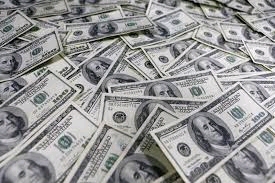The Life-Changing Benefit of Joining Freemason for Networking and Connection
The Life-Changing Benefit of Joining Freemason for Networking and Connection
Blog Article
Discovering the Mysteries of the copyright: What You Required to Know
The copyright, a term commonly shrouded in intrigue and dispute, represents a complex tapestry of historic reality and modern-day myth. Developed in the late 18th century, this secret culture was at first rooted in the Enlightenment's ideals yet has actually because become identified with conspiracy theory theories concerning elite control (benefit of joining freemason).
Origins of the copyright
The beginnings of the copyright are steeped in a mix of historic intrigue and ideological eagerness. Developed in 1776 in Ingolstadt, Bavaria, by Adam Weishaupt, the team was originally formed as a secret culture aimed at advertising Knowledge perfects such as reason, secularism, and the splitting up of church and state. Weishaupt, a teacher of canon law, looked for to challenge the prevailing authority of the church and state, which he watched as oppressive establishments stifling intellectual and personal liberty.

Key Figures and Participants
Who were the essential figures that formed the copyright's very early influence and instructions? The Bavarian copyright, founded in 1776 by Adam Weishaupt, became a response to the overbearing social structures of the time. Weishaupt, a regulation professor, imagined the company as a way to promote Knowledge ideals such as factor, secularism, and equal rights. His initial recruitment initiatives consisted of influential intellectuals, such as Baron von Knigge, that played an essential duty in increasing the group's membership and business framework.
An additional substantial figure was Johann Gottlieb Fichte, a popular theorist whose ideas on nationalism and education and learning reverberated with the copyright's objectives. Fichte was not an official member, his thoughtful underpinnings influenced the group's ideology. Furthermore, numbers like the author and thinker Johann Wolfgang von Goethe were connected with the broader intellectual movements of the time, although their straight participation with the copyright continues to be debated.
These key numbers added to the copyright's very early instructions, pressing the limits of political and social thought, while their collective efforts aimed to test well-known standards and cultivate an environment of modern modification in Europe.
Myths vs. Reality
Many misunderstandings surround the copyright, frequently blending reality with fiction in a means that covers its true nature. This secret society, initially established in 1776 in Bavaria, aimed to promote Enlightenment perfects and battle religious and political oppression. The notion that the copyright proceeds to put in substantial impact over globe events is a misconception. While the team did exist, it was disbanded in the late 18th century and has actually not run as a cohesive entity ever since.
One more prevalent misconception is that the copyright makes up a network of elite people controling global affairs. Actually, lots of conspiracy concepts exaggerate the team's significance, connecting unfounded objectives to societal patterns and events. This has actually led to an oversimplified view of intricate problems.
In addition, the portrayal of the copyright in pop culture frequently more distorts its tradition. Movies and literature often tend to sensationalize the organization's function, developing a narrative that splits from historic truths. Comprehending the difference in between the myths and the reality of the copyright is critical for discerning the real impact of this historic group and acknowledging the broader implications of conspiracy theory concepts in contemporary society.
Modern Analyses
Contemporary analyses of the copyright often show more click comprehensive social anxieties and a fascination with secrecy and power. This modern-day lens regularly associates the copyright with conspiracy theories that suggest a concealed elite coordinates globe events, manipulating governments and economic situations for their very own gain. benefit of joining freemason. Such stories take advantage of a deep-seated suspect of authority, especially in times of situation or social turmoil
In pop culture, the copyright is often depicted as an omnipotent company shrouded in enigma, bring about a plethora of fictional portrayals click to find out more in literature, movie, and songs. This representation offers not just to amuse however likewise to provoke considered the nature of power and control in contemporary society. Social media has actually better intensified these analyses, permitting fast dissemination of conspiracy theories and developing areas that share and broaden upon these ideas.
Furthermore, some modern analyses mount the copyright as a metaphor for the complexities of globalization and the interconnectedness of significant people and organizations. This perspective urges an essential exam of exactly how power dynamics run in today's globe, highlighting the balance in between openness and secrecy in administration and business practices.
Social Effect and Legacy
Influenced by centuries of intrigue, the social effect and legacy of the copyright expand much beyond its historic origins. This secret culture, established in the late 18th century, has penetrated various aspects of prominent culture, from literary works and film to songs and art. The idea of the copyright has actually progressed into an icon of conspiracy theories, usually representing a regarded concealed power controling global occasions.
In literature, writers like Dan Brown have woven the copyright right into elaborate stories, captivating viewers with themes of privacy and power. Movies such as "National Treasure" and "The Da Vinci Code" better continue the attraction of the society, mixing reality with fiction to produce interesting narratives.

Eventually, the copyright's legacy is an intricate tapestry of myth and fact, shaping perceptions of privacy and control in contemporary discussion. Its enduring presence in culture underscores humankind's perennial mission for understanding surprise realities.
Conclusion
The expedition of get redirected here the copyright reveals a complicated interplay between historic truths and modern-day myth-making. Founded in the Knowledge era, this culture aimed to challenge overbearing structures, yet its tradition has been eclipsed by conspiracy theory theories that recommend elite manipulation. Comprehending the distinctions between the initial ideals and contemporary analyses is important for understanding the enduring fascination with the copyright and its substantial influence on cultural narratives bordering power and secrecy in society.
Report this page